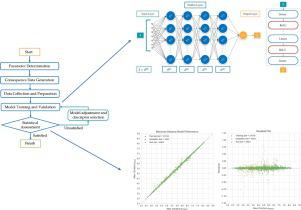Process Safety and Environmental Protection ( IF 6.9 ) Pub Date : 2021-06-16 , DOI: 10.1016/j.psep.2021.06.019 Zeren Jiao , Chenxi Ji , Yue Sun , Yizhi Hong , Qingsheng Wang

|
It is crucial for emergency responders to makes a quick and accurate prediction of toxic chemical dispersions, which can lead to massive injuries and casualties. In this study, a toxic dispersion database is constructed by PHAST simulations, which consist of 30,022 toxic release scenarios of 19 chemicals. A quantitative consequence prediction model is then developed based on this database to efficiently and accurately predict dispersion downwind distances. Random forest, gradient boosting, and deep neural network algorithms are implemented and compared to find the best performing method for the model construction. The deep neural network is found to have the highest accuracy with the test set R2 higher than 0.994 and RMSE less than 0.1 for all key dispersion ranges. The developed toxic dispersion prediction models can be used to quickly generate instant toxic dispersion range estimations for any toxic chemicals at much lower computational costs.
中文翻译:

基于深度学习的定量属性-后果关系 (QPCR) 模型用于毒性扩散预测
对于紧急救援人员来说,快速准确地预测有毒化学物质的扩散至关重要,这可能会导致大量人员伤亡。在本研究中,通过 PHAST 模拟构建了一个有毒扩散数据库,其中包括 19 种化学品的 30,022 个有毒释放场景。然后基于该数据库开发定量后果预测模型,以有效且准确地预测分散顺风距离。随机森林、梯度提升和深度神经网络算法被实施和比较,以找到模型构建的最佳方法。发现深度神经网络具有最高的准确率,测试集R 2高于 0.994 和RMSE所有关键色散范围均小于 0.1。开发的有毒扩散预测模型可用于以低得多的计算成本快速生成任何有毒化学品的即时有毒扩散范围估计。











































 京公网安备 11010802027423号
京公网安备 11010802027423号